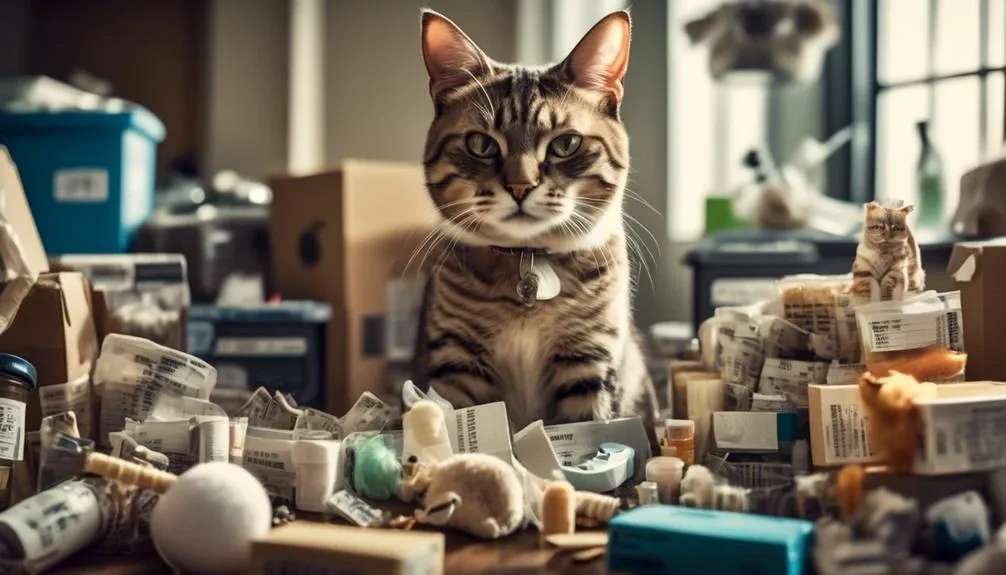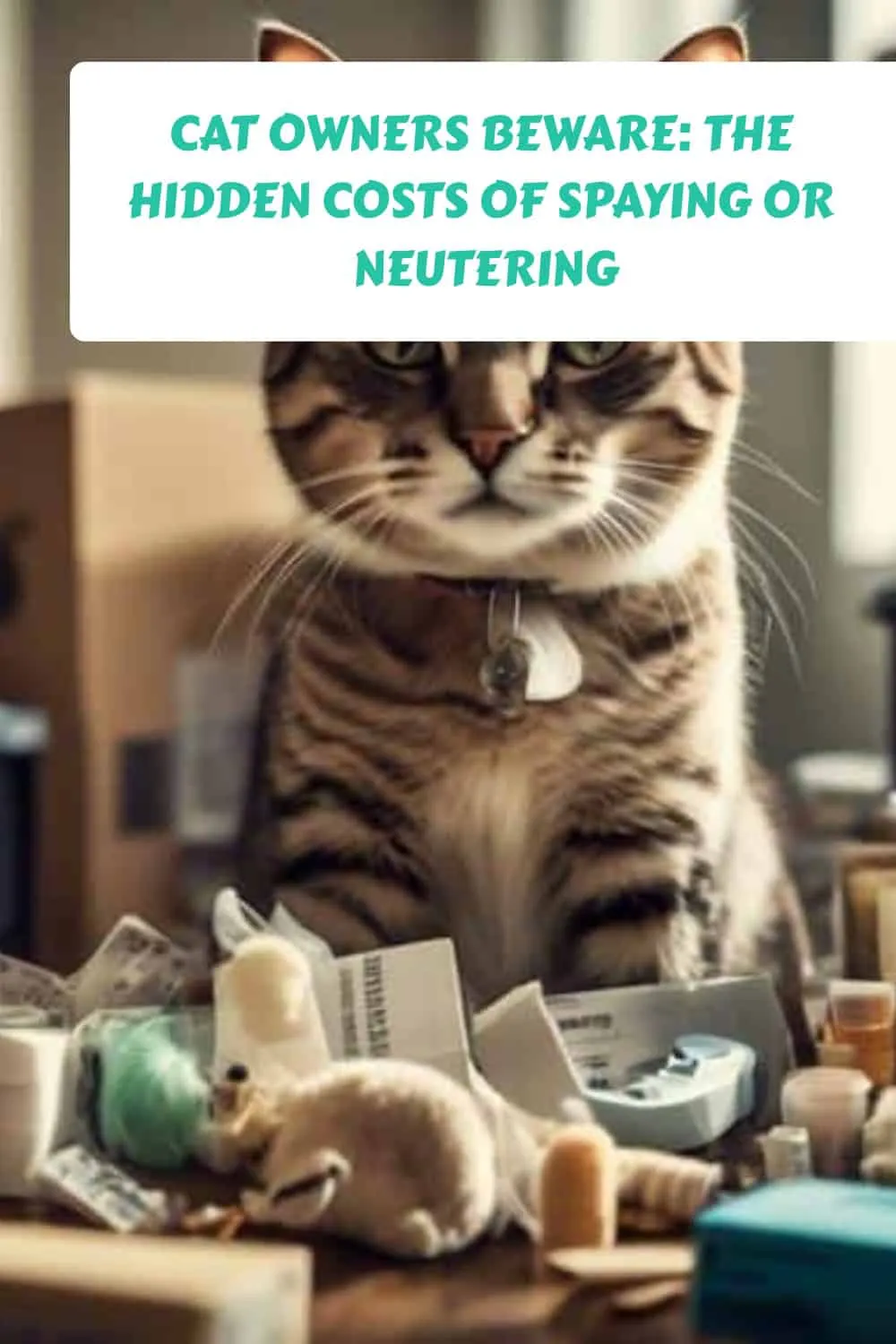The Best Fluffy Pancakes recipe you will fall in love with. Full of tips and tricks to help you make the best pancakes.

As responsible pet owners, it is crucial for us to consider all aspects of caring for our beloved feline companions. Spaying or neutering our cats is a decision that many of us make, understanding the importance of population control and the health benefits it provides.
However, what many cat owners may not be prepared for are the hidden costs associated with this procedure. While the initial expense of spaying or neutering is well-known, there are several other financial considerations that can catch owners off guard.
In this article, we will explore these hidden costs and provide valuable information that will help cat owners make informed decisions regarding their pets' well-being and their own budgets.
So, buckle up and let's dive into the world of the hidden costs of spaying or neutering.
Key Takeaways
- Spaying or neutering a cat is important for reducing the number of unwanted cats and protecting Australia's ecosystem.
- The cost of spaying or neutering a cat can vary depending on location and veterinary clinic, ranging from $50 to $500.
- Additional costs to anticipate include pre-surgery tests and medications, microchipping and registration fees, and follow-up visits and post-operative care.
- The best time to spay or neuter a cat is generally around 5 to 6 months of age, but it can be done as early as 8 weeks for some clinics. Delaying the procedure increases the risk of unwanted pregnancies.
Importance of Spaying or Neutering
Spaying or neutering a cat is a crucial step in responsible pet ownership, with numerous benefits for both the cat and the community.
One of the most significant benefits is its impact on cat population control. By spaying or neutering cats, we can effectively reduce the number of unwanted cats, which helps prevent overpopulation and the associated problems such as strays and feral cat colonies. This not only improves the overall welfare of the cat population but also protects Australia's ecosystem by minimizing the negative impact of these cats on native wildlife.
Moreover, spaying or neutering has positive effects on cat health and behavior. It helps prevent certain diseases and conditions and reduces the risk of certain cancers. Additionally, spayed or neutered cats are generally less likely to exhibit aggressive or territorial behavior, making them safer and more pleasant companions.
Cost Considerations
When considering the financial aspects of spaying or neutering a cat, it is important to take into account the various costs involved beyond just the surgical procedure. These cost considerations are crucial for cat owners who want to prevent overpopulation and understand the financial implications of this important procedure.
Here are five key factors to consider:
- Varies depending on location and veterinary clinic
- Can range from $50 to $500
Some organizations offer discounted or subsidized services
- Additional costs may include pre-surgery tests and medications
- Consider the long-term savings in terms of preventing future health issues
Additional Expenses to Anticipate
Considering the financial aspects of spaying or neutering a cat, it is important to be aware of the additional expenses that may arise beyond the surgical procedure.
These additional costs can include pre-surgery tests and microchipping fees. Pre-surgery tests are often required to ensure the cat is healthy enough for the procedure and may include blood work, urinalysis, and other diagnostic tests. The cost of these tests can vary depending on the veterinary clinic and the specific tests performed.
Microchipping fees are another expense to anticipate, as microchipping is a recommended form of permanent identification for pets. The cost of microchipping and registration fees can also vary depending on the clinic and the location.
Being prepared for these additional expenses can help cat owners budget accordingly and ensure their furry companions receive the necessary care.
Best Time to Spay or Neuter
The optimal timing for spaying or neutering a cat is an important consideration for both the health of the cat and the prevention of unwanted pregnancies. Here are the key points to keep in mind:
- Benefits of early spaying/neutering:
Early spaying or neutering can have several advantages. It reduces the risk of certain diseases and conditions, such as uterine infections and testicular cancer. It also helps to prevent certain behavioral issues, such as aggression and marking territory. Additionally, early spaying or neutering can help to reduce the number of unwanted cats and protect Australia's ecosystem.
- Risks of delaying the procedure:
Delaying the spaying or neutering procedure increases the risk of unwanted pregnancies. Female cats can go into heat as early as 4 months old and may become pregnant if not spayed. Male cats can start spraying to mark territory and may exhibit aggressive behavior if not neutered. Delaying the procedure also increases the risk of certain cancers, such as mammary tumors in female cats.
It is generally recommended to spay or neuter cats around 5 to 6 months of age. However, some clinics offer pediatric spay/neuter programs for kittens as young as 2 months old. It is important to discuss with your veterinarian to determine the best timing for your cat, taking into consideration their overall health and development.
Pet Insurance Coverage
Pet insurance coverage for spaying or neutering a cat can provide financial assistance for this important procedure. The coverage varies depending on the insurance provider and policy. Some policies may cover a portion of the cost, but it is crucial to read the policy carefully to understand the coverage details. It is important to note that pre-existing conditions may not be covered. While pet insurance benefits can extend beyond just spay/neuter procedures, it is essential to consider the overall benefits of having pet insurance.
Before the surgery, there are some pre-surgery preparations to consider. This may include pre-surgery tests and medications to ensure the cat is in good health and ready for the procedure. These additional costs can be included in the coverage provided by the pet insurance, making it easier for cat owners to manage the financial aspect of the surgery.
Conclusion
Having pet insurance coverage for spaying or neutering a cat not only provides financial assistance for the procedure, but also ensures peace of mind for cat owners. Considering the hidden costs involved in this essential veterinary procedure, it is crucial for cat owners to be prepared.
Here are the key takeaways:
- Spaying or neutering a cat helps reduce the number of unwanted cats and protects Australia's ecosystem.
- It improves cat health and behavior, preventing certain diseases and conditions, as well as reducing the risk of certain cancers.
- The cost of spaying or neutering can vary significantly, ranging from $50 to $500, depending on location and veterinary clinic.
- Additional costs to anticipate include pre-surgery tests and medications, microchipping and registration fees, cone or recovery collar, pain medications, antibiotics, and follow-up visits.
- Considering the long-term savings in preventing future health issues, having pet insurance coverage can help alleviate the financial burden.
Conclusion
In conclusion, cat owners must be aware of the hidden costs associated with spaying or neutering their feline companions. Beyond the initial expense of the procedure, factors such as location, veterinary clinic fees, and additional expenses can significantly contribute to the overall cost. Researching affordable cat spaying options can help pet owners mitigate some of these costs. Many local shelters and nonprofit organizations offer low-cost spay/neuter programs, making the procedure more accessible to those on a budget. It’s crucial to consider these resources, as they can provide significant savings while ensuring the health and well-being of beloved pets.
By understanding these financial implications and considering factors such as optimal timing and pet insurance coverage, owners can make informed decisions that prioritize the welfare of their cats while managing the financial responsibility.
It is crucial for cat owners to be well-informed and prepared for the hidden costs of spaying or neutering their pets.










